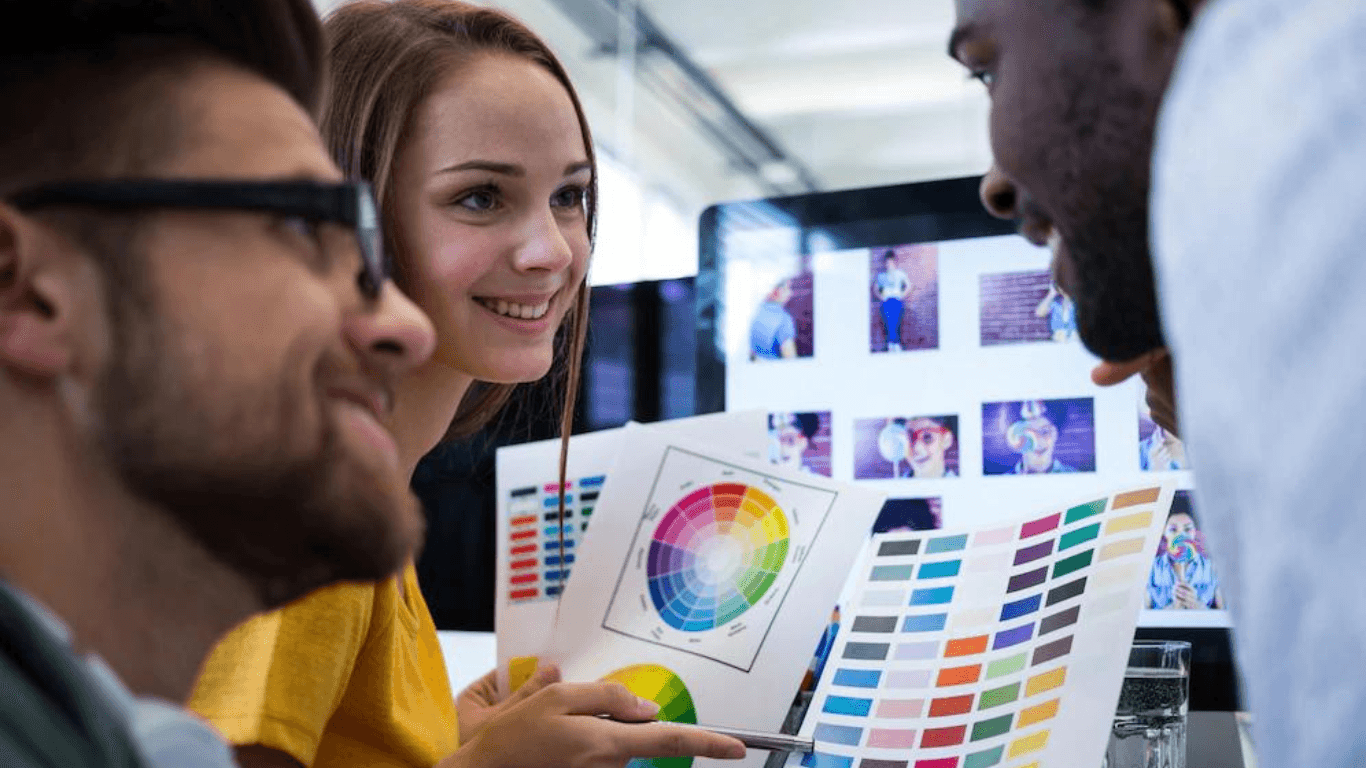Whether you're just starting out with graphic design or have been a seasoned designer for years, it can be difficult to know all the answers to the most frequently asked questions about graphic design. From the basics of what graphic design is to the most-followed design principles, this blog post will provide you with an insightful and comprehensive overview of the graphic design industry.
In this blog article, we will answer all the questions that aspiring and professional graphic designers may have. With a comprehensive look at graphic design, you will come away with a better understanding of the craft and a newfound appreciation of the creative design process.
What are the do's and don'ts in graphic design?
Some general do's and don'ts in graphic design include:
Do's:
- Keep it simple and easy to understand
- Use high-quality images and graphics
- Use consistent formatting and branding
- Use hierarchy to guide the viewer's eye
- Test designs on different devices and in different environments
Don'ts:
- Overcrowd the design with too much information
- Use too many different fonts or font styles
- Use low-quality images or graphics
- Ignore the audience's needs and preferences
- Use copyrighted material without permission.
It's also important to consider the specific context and purpose of the design, as well as any relevant design principles and guidelines.
What are 3 methods of graphic design?
There are many methods for graphic design services, but the most commonly used methods are:
Vector-based graphic design
This method uses mathematical equations to create graphics, rather than pixels. Vector-based graphics are ideal for creating logos, icons, and illustrations that can be scaled up or down without losing quality.
Raster-based graphic design
This method uses pixels to create graphics. Raster-based graphics are often used for photographs and other images that require a lot of detail.
Motion graphic design
This method uses animation and video techniques to create graphics that move and change over time. Motion graphics are used in film, television, video production, advertising, and digital media.
These are just a few of the many methods used in graphic design, and many designers use a combination of different methods to create a finished product.
What are 7 design methods?
The following methods are important processes or techniques for web & graphic designers to help them create effective, efficient, and user-centered designs:
1. Sketching and prototyping
Sketching is the process of creating rough drawings to explore different design ideas, while prototyping is the process of creating a preliminary model of a design.
2. Storyboarding
Storyboarding is a technique used to organize and plan the elements of a design project, such as illustrations, text, and multimedia.
3. Brainstorming and concept mapping
Brainstorming is a technique used to generate a large number of ideas in a short period of time, while concept mapping is a technique used to organize and visualize the relationships between those ideas.
4. Affinity diagramming
Affinity diagramming is a technique used to organize and classify a large number of ideas or concepts into related groups.
5. Personas and user research
Personas are fictional characters used to represent the different types of users who will interact with a design, while user research is the process of gathering data about those users to inform the graphic and web design process.
6. User flow and journey mapping
User flow is the process of mapping out the steps a user will take to complete a task or achieve a goal within a design, while journey mapping is a technique used to visualize the complete experience of a user interacting with a product or service.
7. Heuristic evaluation and usability testing
Heuristic evaluation is a technique used to evaluate a design against a set of established usability principles, while usability testing is a technique used to observe and gather data from real users as they interact with a design.
What are six basic graphic designer principles?
It is important for graphic designers to follow these basic principles because they help to create visually appealing and effective designs:
- Balance: The distribution of visual elements in a design in order to create a sense of equilibrium. It can be symmetrical or asymmetrical.
- Contrast: The use of dissimilar elements to draw attention to specific parts of a design.
- Emphasis: The focal point of a design, which is where the viewer's eye is naturally drawn.
- Movement: The visual flow or path that the viewer's eye follows through a design.
- Proportion: The relationship of one element to another, and to the whole, in terms of size, quantity, or degree.
- Unity: The sense of oneness or cohesiveness in a design, achieved through the use of consistent key elements such as color, shape, and texture.
What are the five rules of graphic design?
Graphic designers strictly follow these rules in graphic designing to create designs that are visually appealing, easy to understand, and effective in communicating their intended message.
- Hierarchy: The arrangement of elements in a design in order of importance, with the most important element at the top and the least important at the bottom.
- Alignment: The arrangement of elements in a design so that they align with one another and create a sense of order and visual balance.
- Repetition: The use of consistent elements such as color, shape, and texture throughout a design to create a sense of unity and cohesiveness.
- Proximity: The placement of related elements close to each other in a design to indicate a relationship between them.
- White Space: The empty space in a design that helps to create a sense of balance and separation between elements, making it easier to read and understand.
What is the SWOT of graphic design?
SWOT is a tool used to analyze a company or organization's strengths, weaknesses, opportunities, and threats. In the context of graphic design, a SWOT analysis would involve looking at the strengths and weaknesses of a particular design or designer, as well as the opportunities and threats that may impact the design industry as a whole.
A "strength" could be something like a designer's strong skills in typography, a "weakness" might be their lack of experience in animation, an "opportunity" could be the growing popularity of design for mobile devices, and a "threat" could be the increasing competition from freelance designers and design software.
It's a way to evaluate the design and the industry as a whole, to identify the areas that the designer or the company should focus on, and to make a plan to take advantage of opportunities and mitigate the threats. It's a way of looking at the present and future of graphic design, so that designers can make informed decisions about their work and their careers.
Graphic Design 101: The Golden Rule in Graphic Designing
The number one golden rule in graphic design is to always keep the audience in mind. A designer's main goal should be to create designs that effectively communicate the intended message to the intended audience.
To do this, a designer must understand the needs, preferences, and habits of the audience, and create designs that are relevant, appealing, and easy to understand. This means considering things like the audience's age, gender, culture, reading level, and so on, as well as the context in which the design will be viewed.
By keeping the audience in mind, a designer can create designs that are not only aesthetically pleasing, but also effective in achieving their intended purpose.
What are the 2 basic types of graphics?
There are two basic types of graphics: raster and vector. Both types of graphics have their own advantages and disadvantages and are used depending on the need of the project.
Raster graphics, also known as bitmap graphics, are made up of pixels arranged in a grid. Each pixel is a tiny square of color, and the overall image is created by combining these pixels in different colors and patterns. Raster graphics are best for photographs, images with gradients and other subtle changes in color, and images that require a high level of detail.
Vector graphics, on the other hand, are made up of mathematical equations that define the shapes and lines that make up the image. These shapes and lines can be scaled up or down without losing resolution, making vector graphics ideal for logos, illustrations, and other designs that need to be resized frequently.
What is Level 2 graphic design?
Level 2 graphic design is a level of skill or proficiency in designing graphics. It's like being in a class or a training program where the student has learned some basic techniques and tools to create graphics and they are now learning more advanced techniques and concepts to improve their skills. It's like being a beginner at something and now moving on to the next level where you are more experienced and confident in what you are doing.
At this level, a student would be learning more advanced techniques and concepts such as layout design, typography, color theory, and the use of more complex software such as Adobe Illustrator and Photoshop. They would also be learning how to create designs for different mediums such as print, web, and social media.
In summary, Level 2 graphic design is a stage where a student has gained more experience and knowledge in creating graphics and is now learning more advanced techniques and concepts to improve their skills.
Is C++ used in graphic design?
C++ is a programming language that is used to create software and applications. It is a high-performance language that is particularly well-suited for creating complex and performance-intensive applications. It is an extension of the C programming language, which is known for its efficiency and low-level capabilities, C++ adds object-oriented features such as classes and objects, making it a versatile language for creating a wide range of applications.
In the field of graphic design, C++ is used to create tools and software that are used by designers to create and edit graphics. For example, many popular graphic design software such as Adobe Photoshop, Illustrator, and InDesign are created using C++. C++ is also used to create plug-ins and add-ons for these programs, which can be used to add new features and functionality to the software.
C++ is also used to create 3D modeling and animation software such as Autodesk Maya, and game engines like Unity and Unreal Engine. These software are used by game developers, animators and graphic designers to create 3D models, animations, and interactive experiences.
In summary, C++ is a powerful programming language that is used to create a wide range of software and applications, including those used in graphic design, such as graphic design software, 3D animation software, and game engines. It's used to create and add functionalities to these software which allow the designers to create and edit graphics in a more efficient and professional way.
Graphic Design 101: The 80/20 Rule
The 80/20 rule in graphic design, also known as the Pareto principle, states that 80% of the effects come from 20% of the causes. In other words, it suggests that a small portion of basic design elements will have a disproportionate impact on the overall effectiveness of the design.
In graphic design, this principle is often applied to the use of negative space, typography, and color. For example, a design might feature a single, bold headline that takes up 20% of the space, but it is the primary element that captures the viewer's attention and conveys the main message. Similarly, a design might use a limited color palette, with just a few colors making up 80% of the design, while the remaining colors are used sparingly to add contrast and interest.
The 80/20 rule can also be applied to the composition of a design. A designer can use the rule to make sure that the most important elements of the design, such as the subject of a photograph or the focal point of an illustration, take up around 80% of the space, while the remaining elements are used to support and balance the composition.
What are the 3 C's in graphic design?
The 3 C's in graphic design are Clarity, Contrast, and Consistency. These three principles are considered essential for creating effective and successful designs.
Clarity
Clarity refers to the ability of the visual design to effectively communicate its message. A clear design is easy to understand and interpret, and it quickly grabs the viewer's attention. Clarity can be achieved by using simple, easy-to-read typography, and by using images and graphics that are relevant to the message being conveyed.
Contrast
Contrast refers to the difference in the visual element that makes them stand out. By using contrast, the designer can create a visual hierarchy of elements, making certain elements more prominent and others less so. This can be achieved by using different colors, sizes, or shapes to create a visual contrast between elements.
Consistency
Consistency refers to the use of consistent elements throughout the design, such as typography, color, and imagery. Consistency helps to create a sense of unity and cohesiveness in the design and makes it more visually pleasing. Consistency should be used throughout all aspects of a design, including the layout, typography, and color palette.
What are the 3 P's in graphic design?
The 3 P's in graphic design are Purpose, Plan, and Production. These three principles are considered essential for creating effective and successful designs.
Purpose
Purpose refers to the reason why the design is being created. Having a clear understanding of the purpose of the design will help the designer to make decisions about the overall look and feel of the design, as well as the specific elements that should be included. Understanding the target audience and the message that needs to be conveyed is key to determining the purpose of a design.
Plan
Plan refers to the creative process of creating a detailed plan for the design before beginning the actual production. This plan should include information about the design elements, such as the layout, typography, and color palette, as well as the specific elements that will be included in the design. Planning also includes researching the target audience, analyzing the competition and understanding the industry standards.
Production
Production refers to the process of creating the actual design. This includes creating the layout, selecting the appropriate typography and color palette, and incorporating all of the other elements that have been planned. The production phase is where the design comes to life and all the decisions are executed and finalized.
What is the rule of thirds in graphics?
The rule of thirds is a principle of composition used in graphic design and photography. It is based on the idea that the human eye is naturally drawn to certain points within a composition, and that placing important elements at these points can create a more visually interesting and balanced image.
The rule of thirds is a simple concept where an image is divided into nine equal parts by two horizontal and two vertical lines, creating a grid of nine squares. The most important elements in the image should be placed along these lines or at the points where they intersect. For example, if you're taking a photograph of a person, you would place the person's eyes on one of the horizontal lines, or on one of the intersections.
This principle can also be applied to graphic design, such as when designing a brochure or website layout. The rule of thirds can be used to position important elements, such as headlines or images, in a way that is visually pleasing and balanced.
Optimize Your Brand Strategy with Outsourced Customer Care
Elevate your brand's visual appeal by integrating outsourced customer care into your graphic design strategy. Work with a trusted outsourcing provider that specializes in offering top-tier customer care, which can significantly enhance the effectiveness of your graphic design efforts.
At ManilaPros, we offer a full-service, five-star customer care for retailers. Through our fully vetted and trained customer support Pros, you'll get access to crucial customer insights that are invaluable for informing your graphic design process. Our team has undergone specialized on-brand training to ensure that they can properly communicate using your brand's voice, tone, and values.
Book a call with us today to learn more about our retail customer care services.





